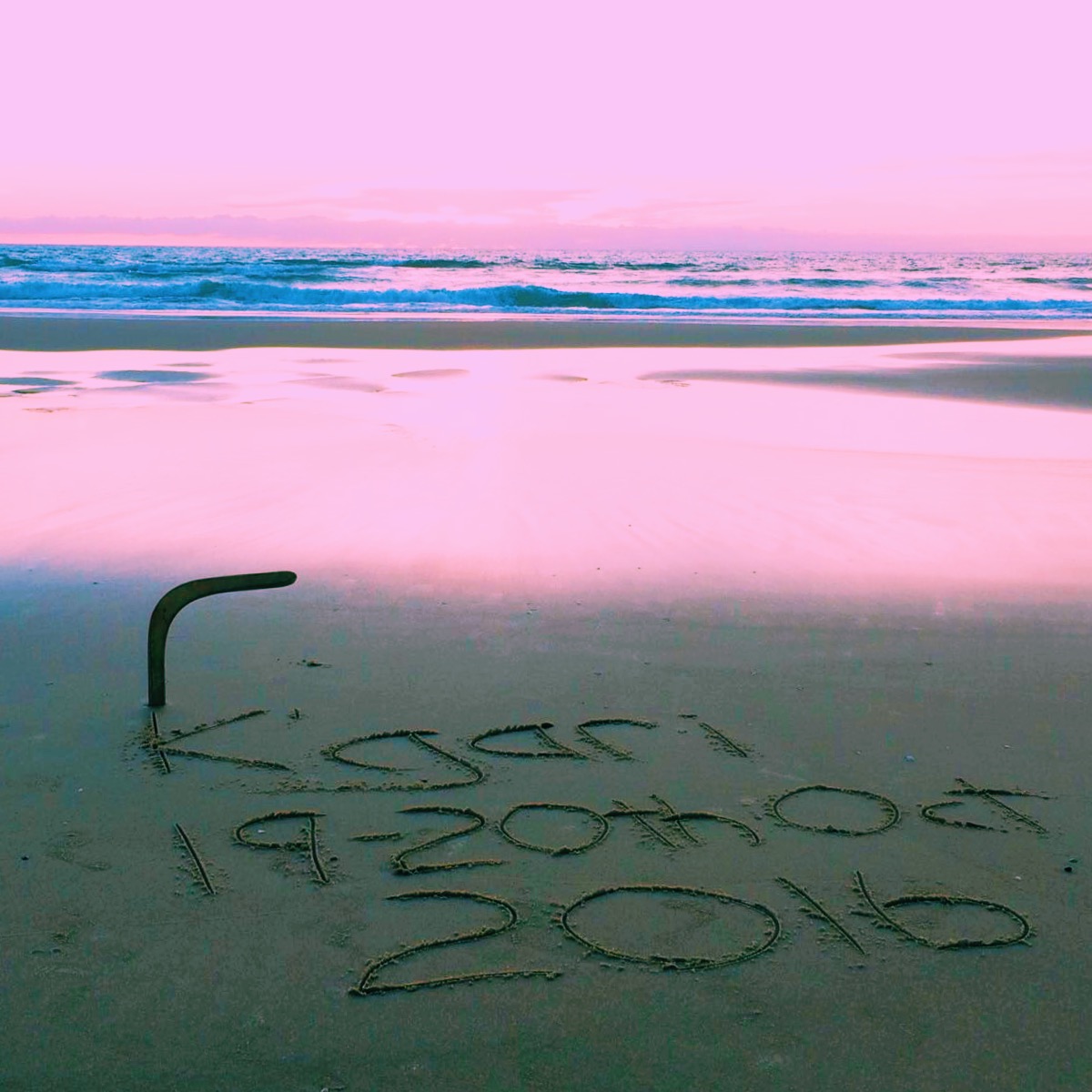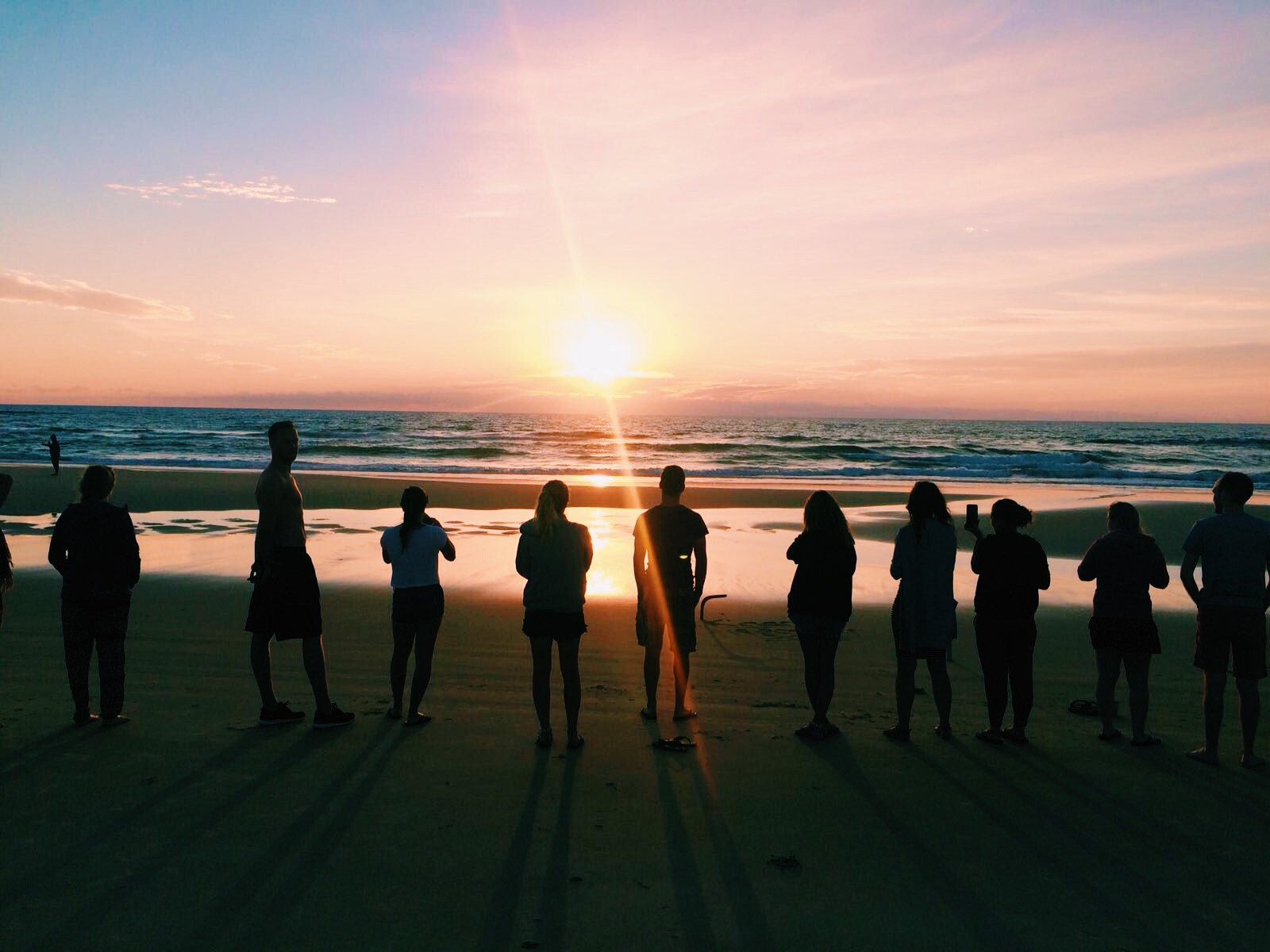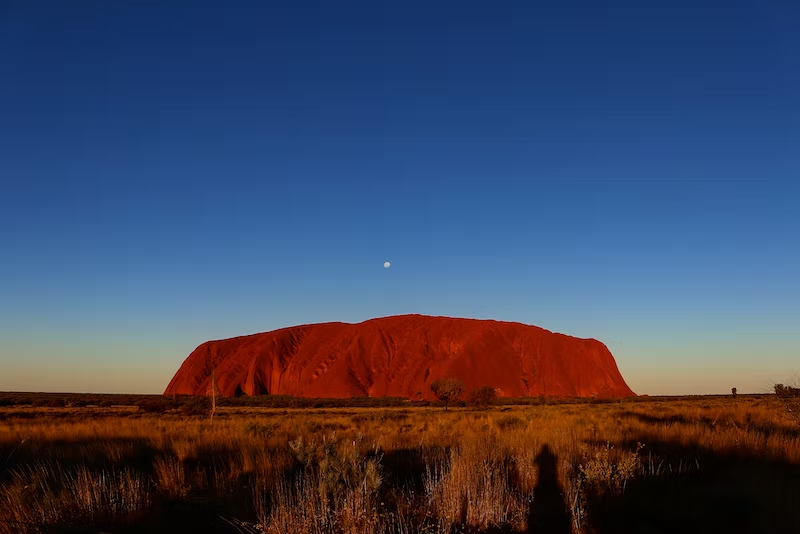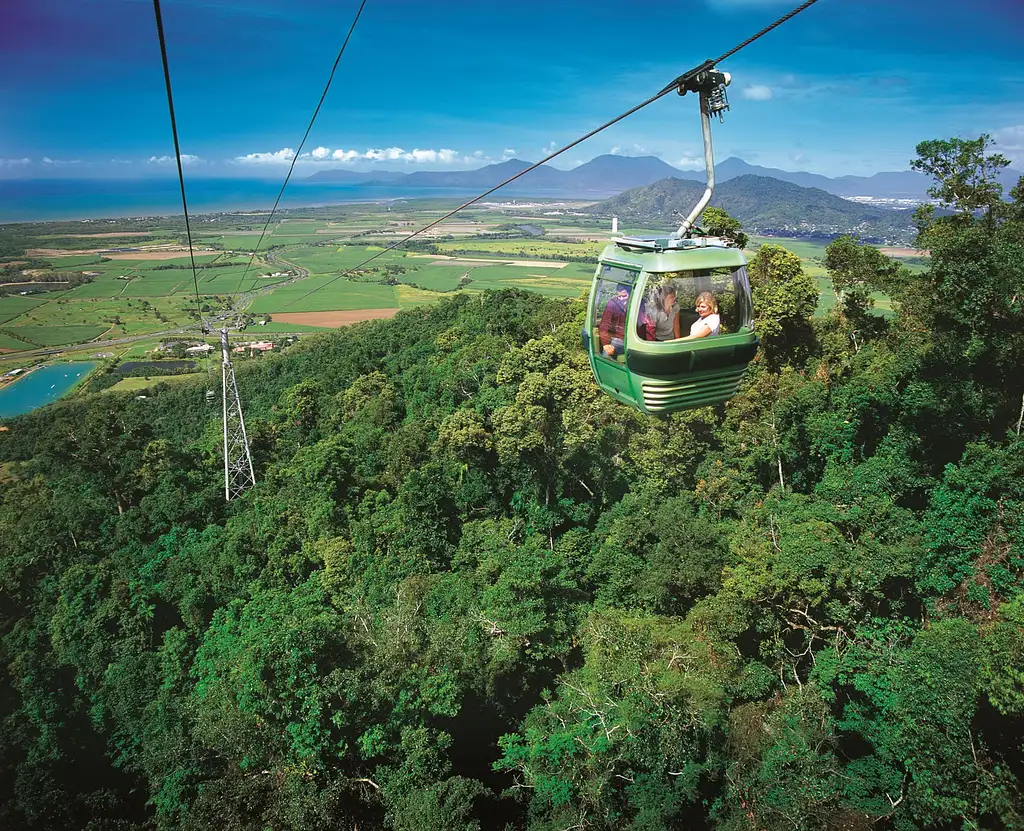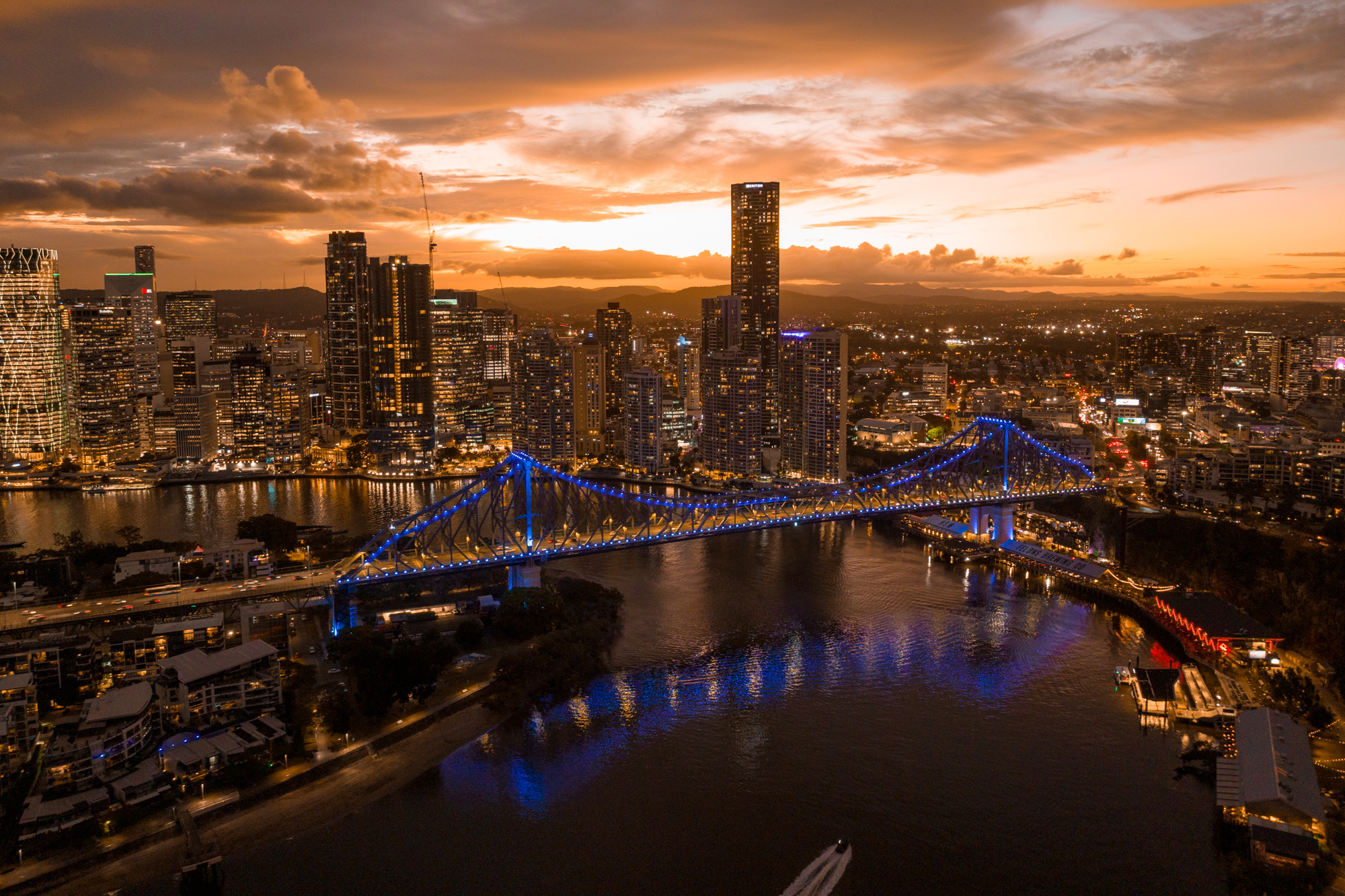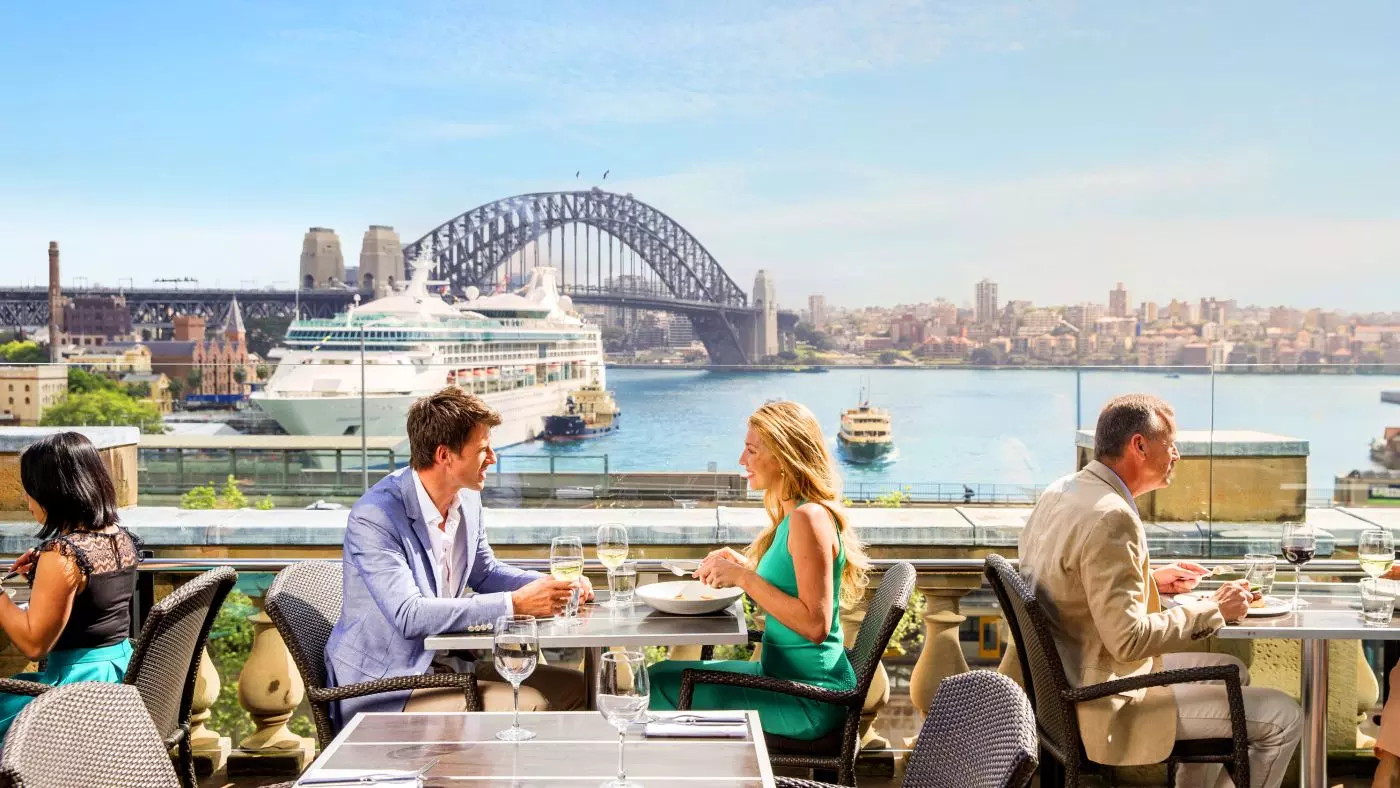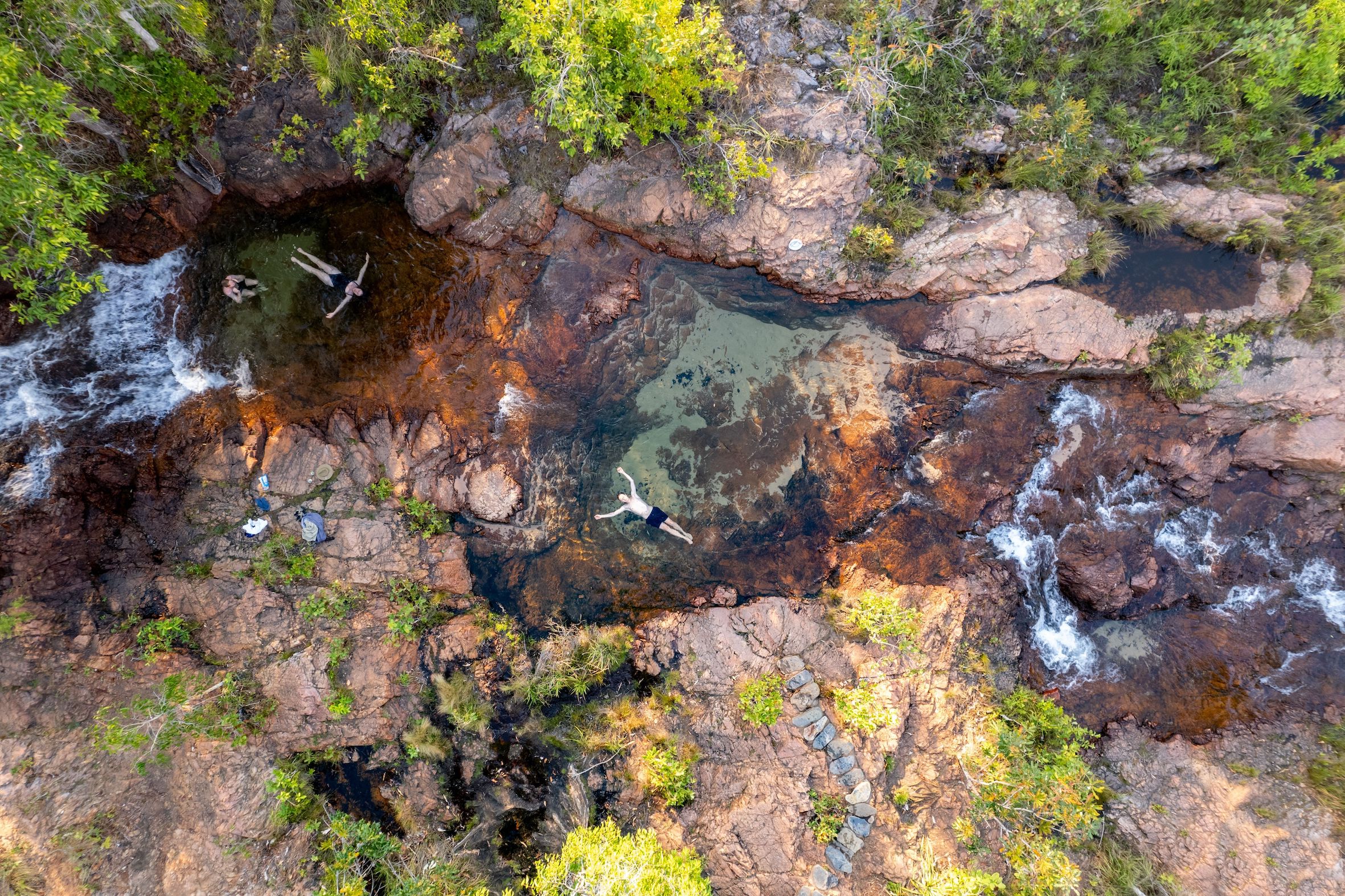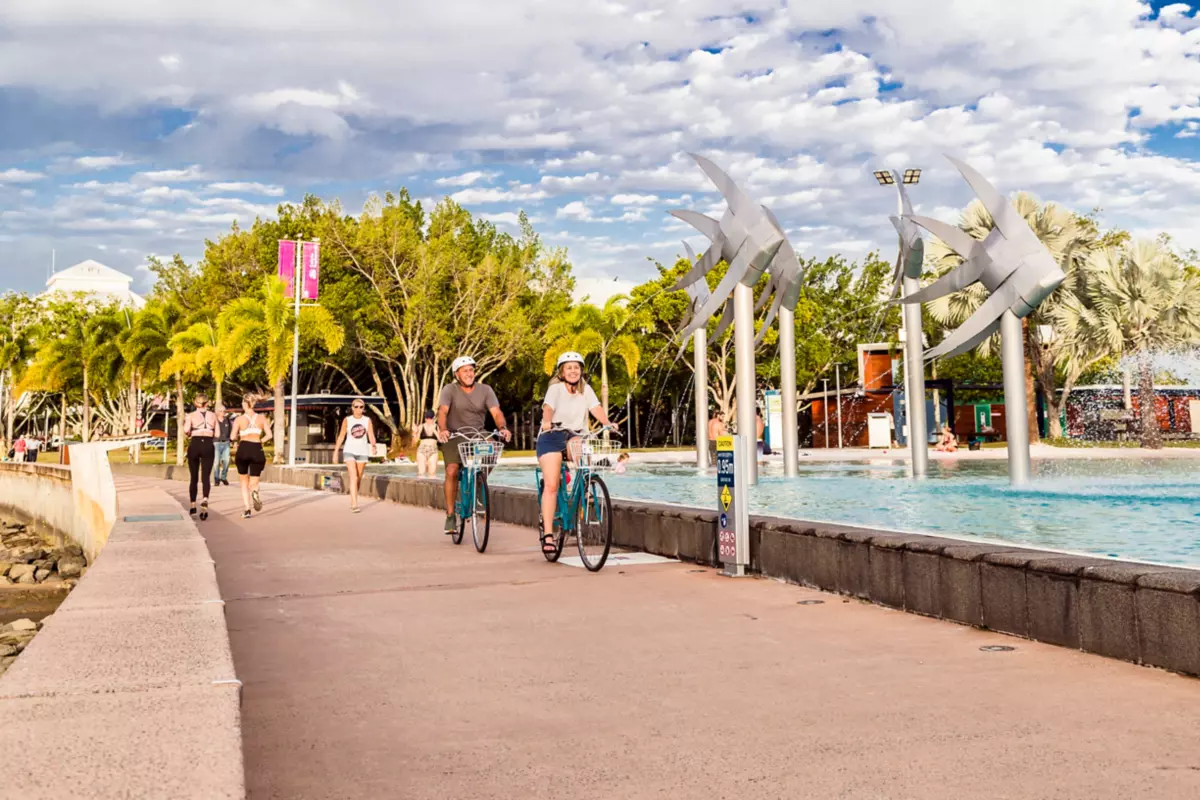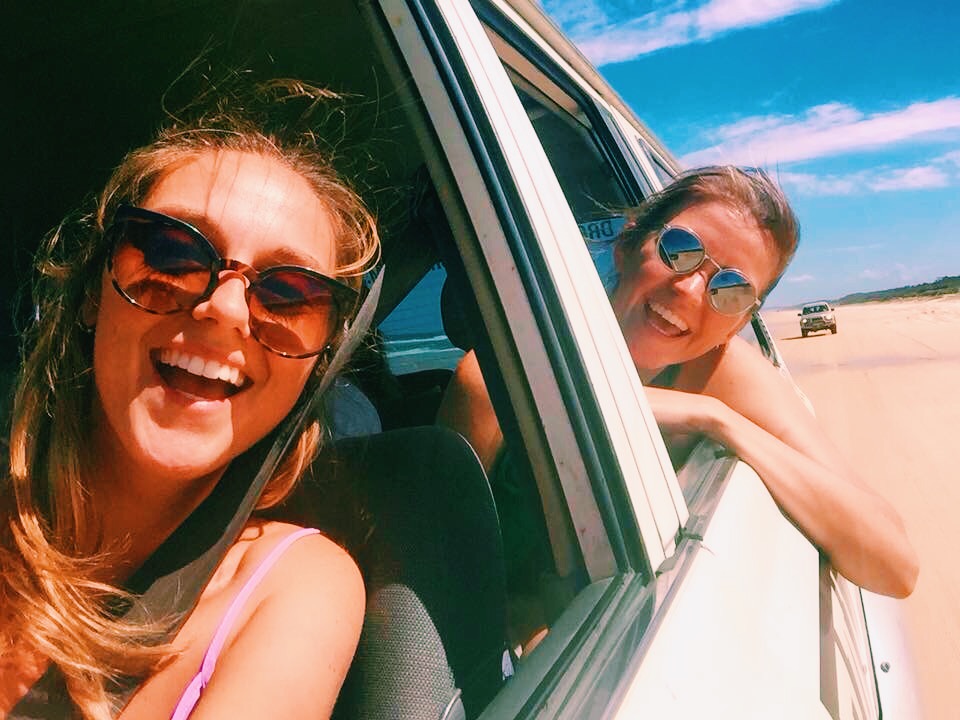
With its rainforests, white sandy beaches, freshwater creeks and crystal clear lakes, it's not hard to understand why Fraser Island gained its world heritage listed status. Thousands of travellers descend upon the island each year to explore this natural, rugged, untapped paradise and this year I was lucky enough to be one of them.
The island, otherwise known as 'K'gari' in the indigenous people's language, is the world's largest sand island and stretches 123km long and 23km wide. I set sail with Drop Bear Adventures on a two day one night escapade and here is a run down of my time on the island.
Day One
We arrived at Dropbear's headquarters in Noosa around 7am and were met by our brilliant tour guide Clint, who checked us in, briefed us on the trip and got us super excited (considering how early if was!) for the two days ahead. We also had the chance to mingle with our fellow Dropbears - there were around 20 of us from all around the world, ranging from early twenties to early thirties.
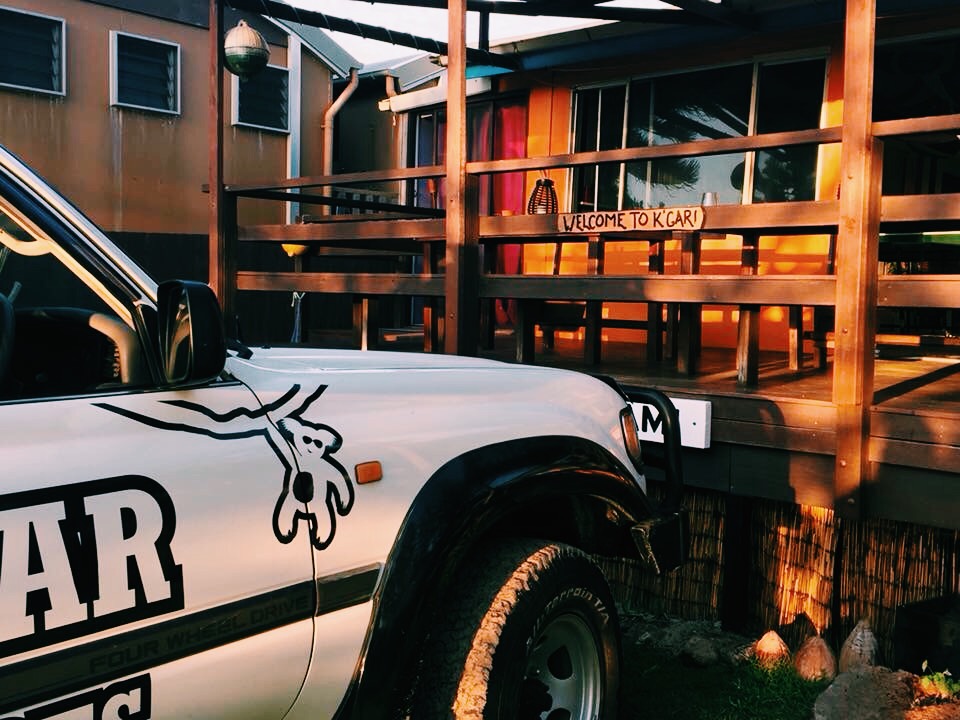
Before we knew it we were climbing into Dropbear's huge 4WD vehicles (three of them in total), and were ready to make the journey to the island. It was a stunning morning and we took a beautiful inland route to Rainbow Beach, where we stopped to pick up a couple more Dropbears before catching the ferry over to the island. By now our energy levels had increased and we were buzzing to see what Fraser Island had in store for us.
Once off the ferry, it soon hit me that driving in sand may not be as easy as it looks! However I swiftly put into place the tips Clint had provided us with and was soon cruising along the beach with the wind in my hair - it was the most awesome feeling. We all took it in turns in the drivers seat, beaming from ear to ear and cheering each other on.
We soon arrived at Dropbear's beach house retreat - a gorgeous and happy abode situated right on the beautiful 75 mile beach with ocean views, a games room, an open fire place and comfy, ensuite dorm rooms. This place had so much character and I couldn't wait to spend the night there.
We were welcomed with open arms and smiles by the Dropbear crew who showed us around, fed us a delicious buffet style lunch and briefed us on the day.
It was a stunning day so we couldn't wait to get back in the 4WD's speeding down the beach. It was the coolest feeling in the world being able to carve our own tracks in the sand whilst looking out to never ending dunes on our left and crashing waves on our right. We even came across a couple of dingos on our way which truly embodied the 'aussie' experience!
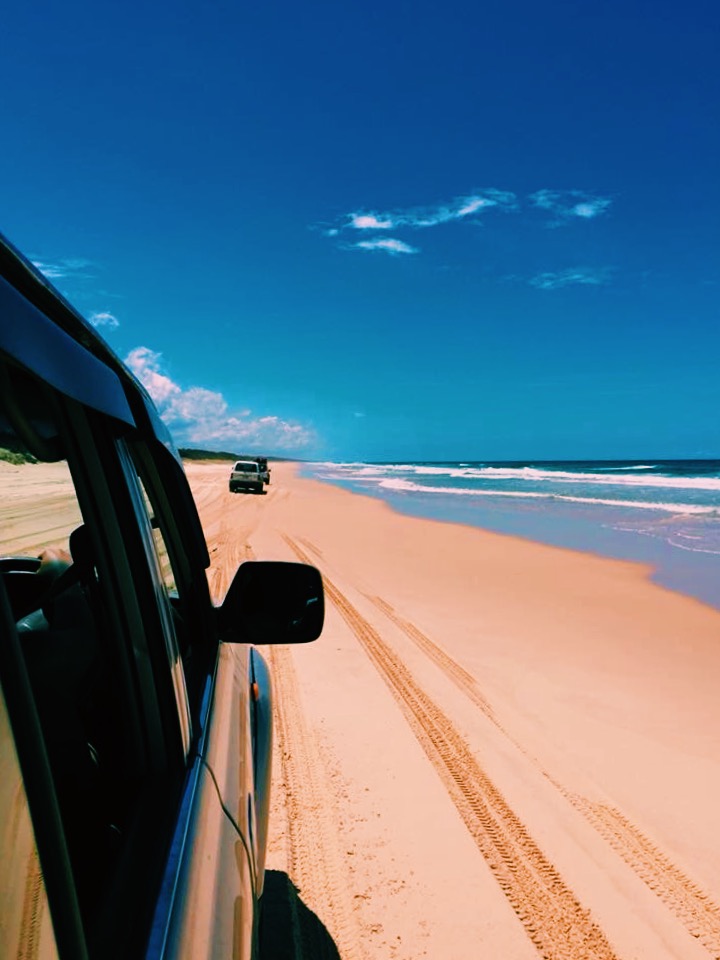
We then spent a couple of hours driving through the island's ancient rainforest towards Lake Allom. The forest was dense in Satinay and Box Brush trees that were so majestic and tall they formed a dark green sky above our heads. Fraser Island is the only place in the world where the rainforest is found growing on sand dunes so it was surreal to witness their huge roots rising out of the soft ground. We soon arrived at Lake Allom and made the short distance there by foot, during which Clint shared with us some essential survival tips that'll stay with me forever. The most memorable is 'Cooee!', a shout used in the Australian bush to attract attention from afar. This is because when done correctly (loud and shrill), a call of 'cooee' can carry over a huge distance in comparison to a regular cry of help. We all had a practise and were amazed at the echo it produced through the rainforest - it felt as if the sound could travel all the way home!
Once we came face to face with Lake Allom the first thing to grab our attention were the little turtles swimming around in the shallows! We were told how the lake is also known as 'Turtle Lake' as it is home to lots of freshwater turtles known as 'Kreff's river turtles'. We sat on the viewing platform and watched as they popped up out of curiosity, showing a yellow streak on the side of their heads. We couldn't help but join them in the water, which was warmer than expected and unbelievably clear. Unfortunately they swam away, however we had a beautifully refreshing dip and marvelled at the colours and reflections on the lake surrounding us.
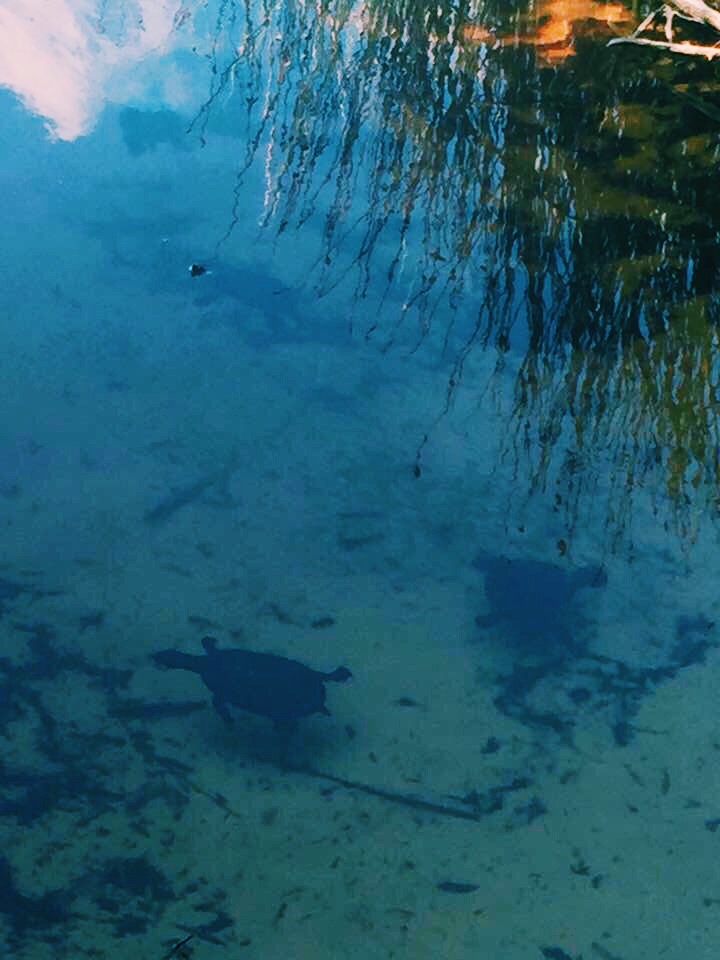
We then took the road back to camp, taking it in turns with 20 minute stints each in the driver's seat. Our tour guide Clint made it look so easy in comparison! We were bouncing along the sandy tracks, over dunes and into dips - it felt like a rollercoaster and we all had our hands in the air!
The beach was a welcoming sight and called for a more relaxing (yet less thrilling!) cruise back just as the sun was setting. We stopped off at the famous Maheno Shipwreck on the way and learnt about her stormy end during a cyclone in 1935. It was fascinating to walk around the wreck and see the hull's deteriorating remains in its salty surroundings. Of course we took the obligatory group photo before leaving.
Back at camp, we were met by the lovely drop bear crew who cooked us up a BBQ feast which was followed by story time around the bonfire. After we'd roasted some marshmallows and bonded over our favourite goon, Clint then shared with us the history of the island and the legend of the 'dropbears'. What really stuck with me was the original name of the island - 'K'gari', which directly translated from the Butchella language means 'paradise'. It isn't hard to understand why. We learnt how the island is still home to a number of indigenous descendants who share a deep respect for the island, it's settlers and culture. This community, along with plenty of others (especially the drop bear crew) hope that soon the island will be known by its traditional indigenous name as a nod to its native past.
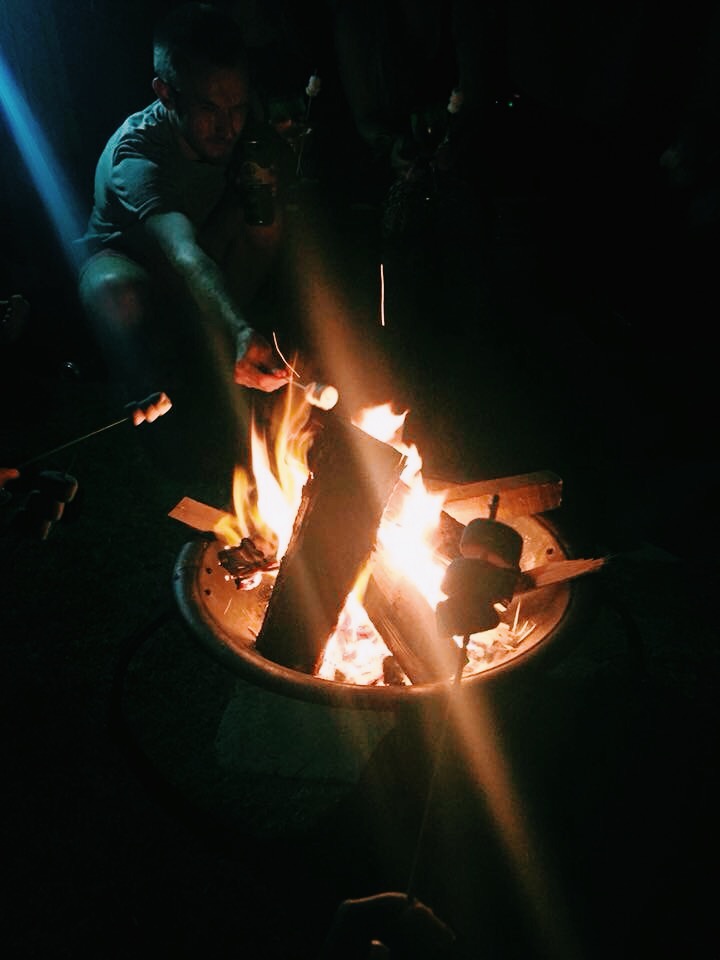
Day Two
Today started in the most magical way. We were awoken to the sound of a didgeridoo at approximately 5am which got us up just in time to watch the sun rise over the island. It illuminated the beach with a deep golden glow as it rose higher and brighter - a real 'wow' moment! We then had our go at learning the art of frisbee throwing - harder than it looks for sure, however a good few members of the group nailed it.
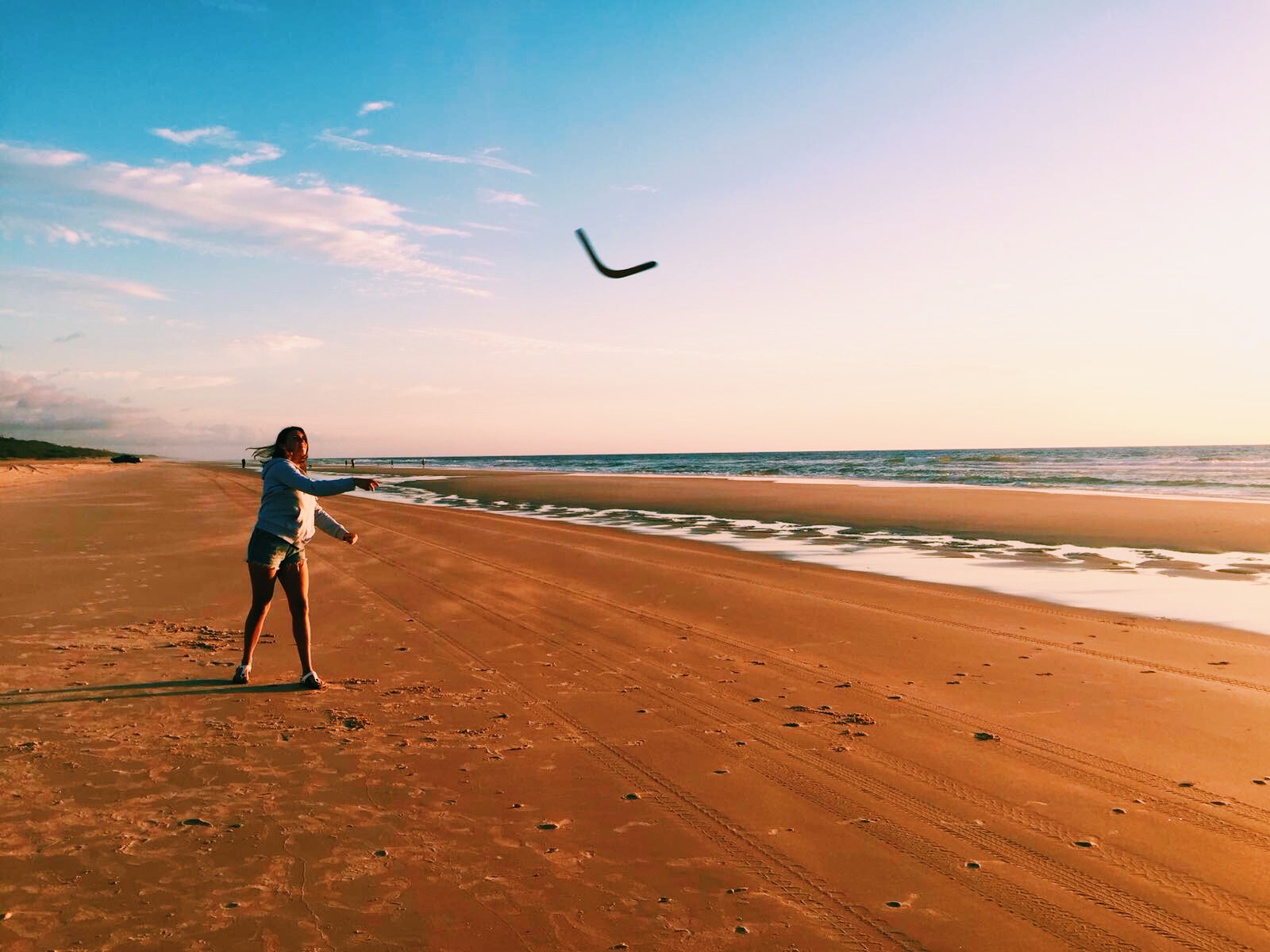
After a yummy breakfast and a good few cups of coffee, we were ready for another full day of adventure. We left camp at around 7am and headed out in the 4WD's towards Pile Valley - a place of glistening streams, towering rainforest trees and hanging vines. We walked for around 30 minutes through the beautiful surroundings, stopping at times to take in the peacefulness and tranquility of the island.
We then headed towards our next destination - Lake Birrabeen. This was without a doubt the most spectacular lake I have ever seen. The water was so crystal clear it was begging for us to take a dip and the sand was so gloriously white and fine. We spent the most relaxing couple of hours here taking in its natural beauty, bathing in the waters and sun baking in the warm heat - I think I could've stayed forever!
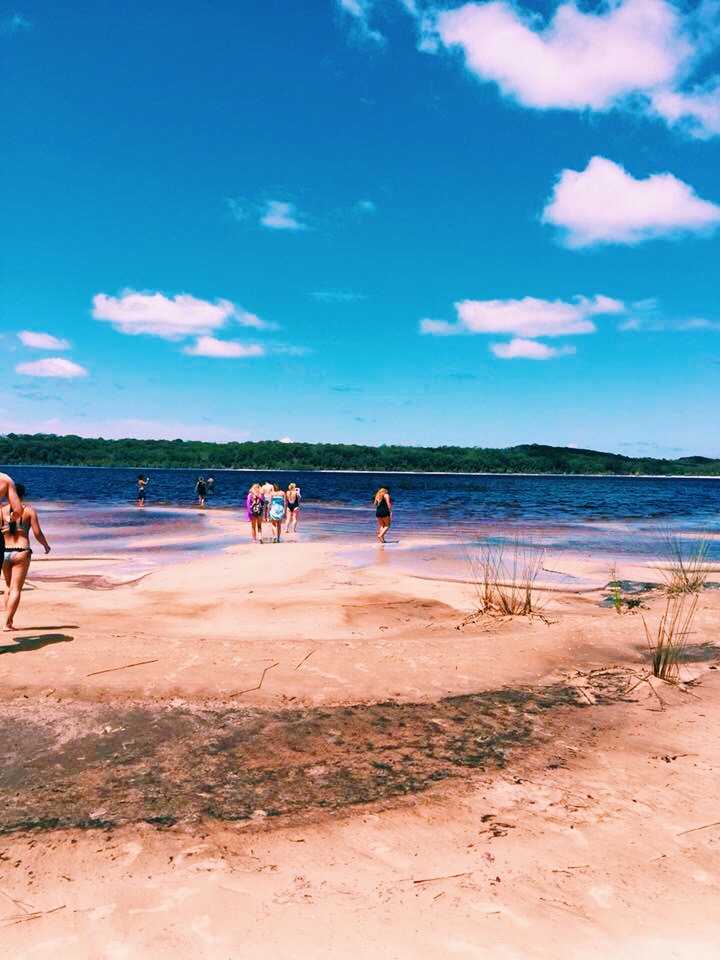
We (reluctantly) left in hunt of our last lake of the day - Lake Boomanjin. At 200 hectares in size, this lake is the largest perched lake in the world, however the most distinctive feature for me was its colour. Our jaws dropped as we discovered the stunning ombré effect of the water in shades of deep purple and red all the way through to orange and pink - it was unreal. Clint told us how the lake is fed by two creeks that pass through a swamp full of plant tannins which tea-stain the water. He also told us how the lake's water level dramatically rises and falls depending on the amount of rain and evaporation. We were visiting in a particularly dry spell, and it was fascinating to walk over the dry, cracked lake-bed and past plants and mangroves that were not so long ago underwater.
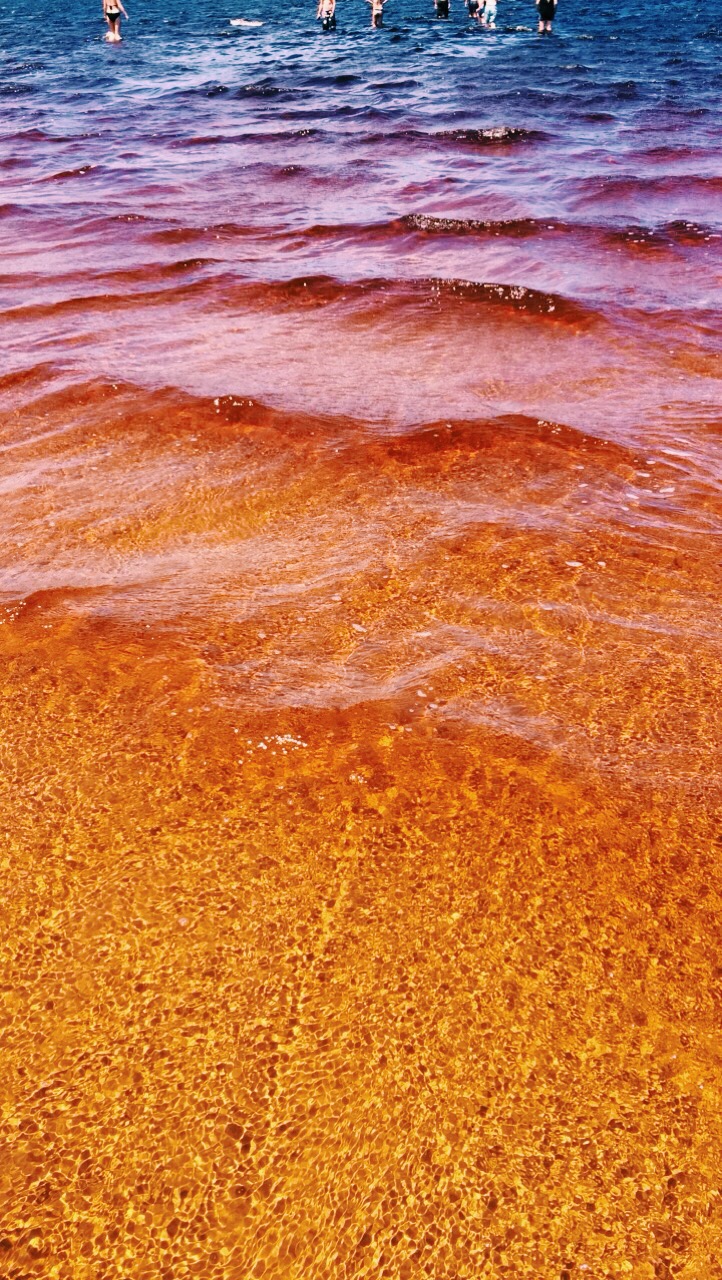
After time spent swimming and exploring the area, (and the odd group selfie!) we had worked up an appetite. Luckily for us, team dropbear had pre-prepared a delicious picnic lunch for us to enjoy on the road which we all unpacked and got stuck into.
With our bellies full and our hearts happy we jumped back in the 4WD's for our final journey back to camp. Here we collected our belongings and said our goodbyes to the amazing team at drop bear before driving back along 65 mile beach towards the ferry.
It was a ripper of an evening, so once we had made it onto the mainland, Clint decided to take us for a drive along the gorgeous Rainbow Beach. The tunes were pumping, the sun was setting and there were even dolphins and humpback whales breaching in the distance! It couldn't have been more perfect.
Around 6pm we arrived back to Noosa absolutely high on life after an incredible couple of days exploring K'gari Island with a beautiful bunch of people. Special thanks to the team at Drop Bear for providing such a memorable trip and for letting us experience one of the most beautiful places on the planet - it was without a doubt the highlight of my east coast trip.
